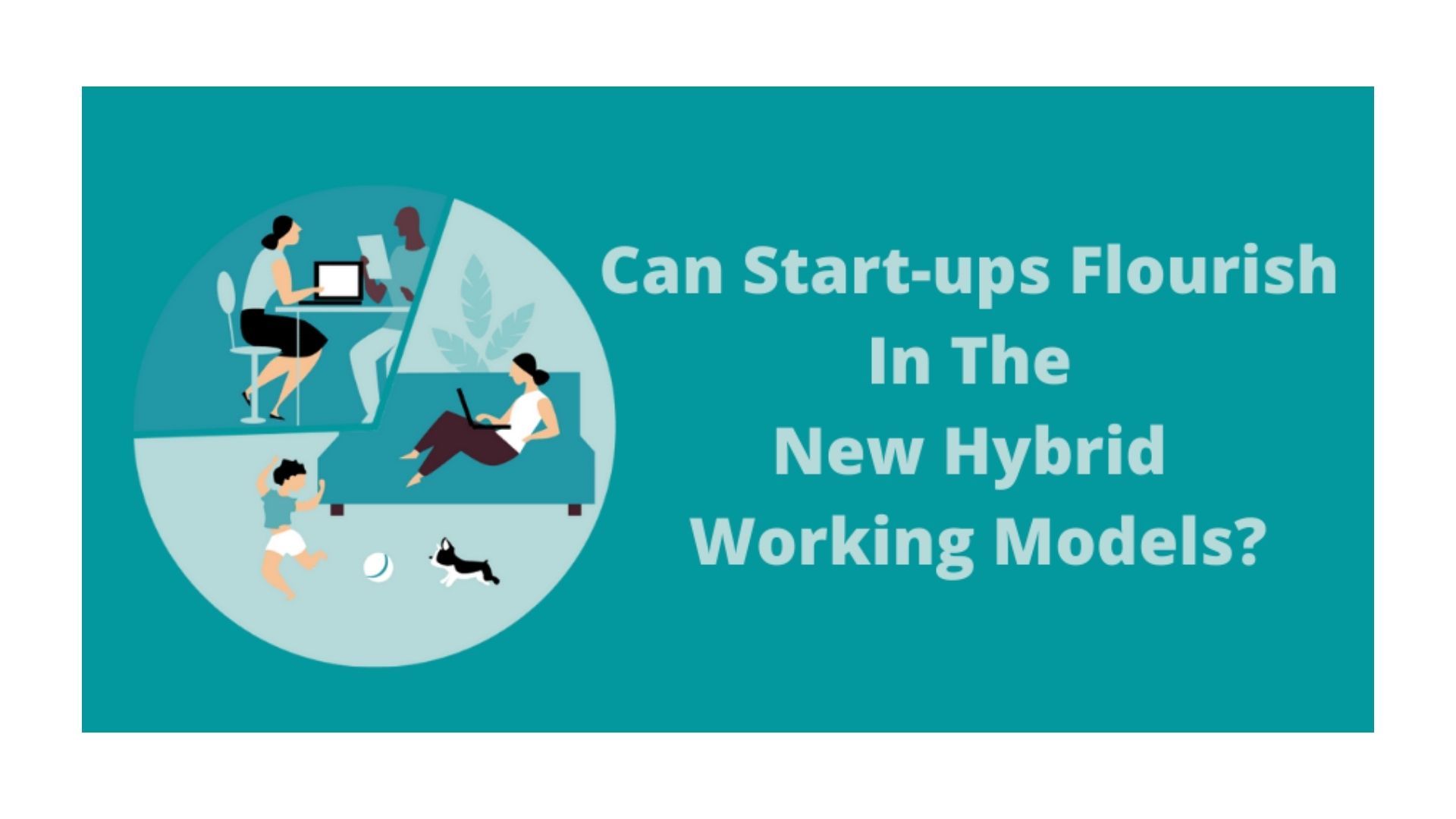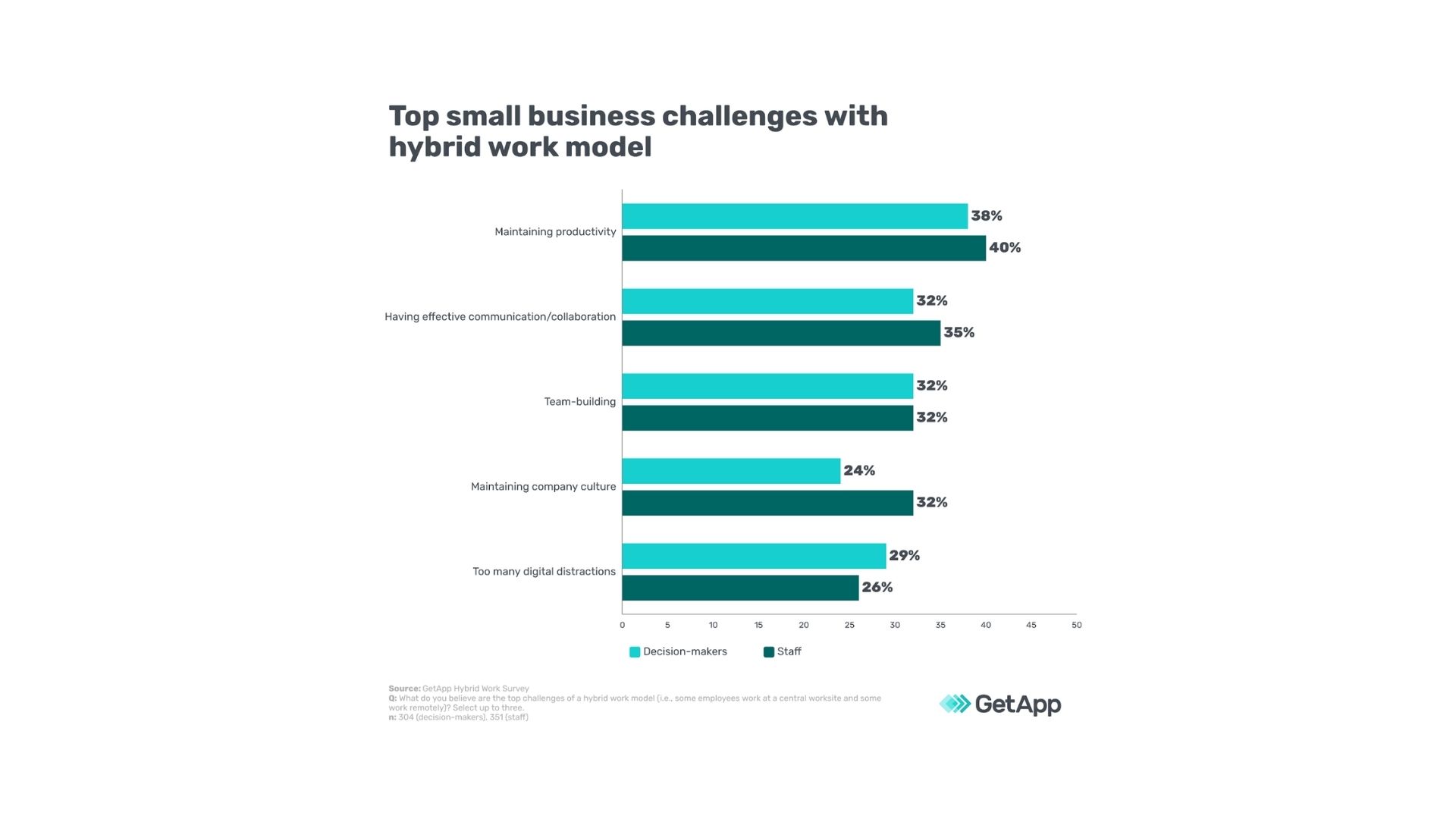Can Start-ups Flourish In The New Hybrid Working Models?

The hybrid working model, which was adopted merely as a model out of compulsion due to Covid, has gone through a decent trial and testing phase and has settled as a more comfortable and accepted working model currently. Reports indicate from various studies that two out of three workers now prefer working under this scheme.
The reason for this model's success could be that it creates a sense of inclusion, a facility to balance work-life, save time and commuting expenses, and above all, a convenience to both work from home as well work from the office. This model fits well for all established organizations. What about Startups? Can this model work well for them too? This article will explore a few facts that can help in concluding.
The Key Challenges for Start-ups in the Hybrid Workspace

- Communication and collaboration: The need for effective communication and collaboration is under the spotlight since remote work has become the trend of the new work culture. Many experts believe that by implementing a hybrid work model, the organization can improve team communication and coordination. But without proper access to communication tools and amenities, even the hybrid work model can fail. Startups that often operate with limited resources can face problems in communicating and coordinating with team members.
- Employees’ engagement: The idea behind implementing remote work is to give employees flexibility and autonomy over their work. It eventually helps to increase their engagement level. However, some employees may find the hybrid model a barrier to their work productivity and engagement as they have to frequently juggle between the office and remote work.
- Lack of tools and amenities: Budget constraint is a common issue with start-ups, and if it is preventing them from investing in tools, software, or training materials to propagate hybrid work models, then it is a problem.
- Security breach: Security stands as the main challenge while enabling remote working models. Start-ups that support a hybrid work environment but do not have strict security measures can fall out abruptly.
- Dilute company’s culture: A company's culture is a defining factor for the growth of employees and the company both. It binds employees together and keeps them motivated toward the organizational goal. But a hybrid work model can influence this work culture as the team is distributed and less connected.
- Low level of productivity: Employee tracking and proper performance management are envisioned as the solutions to improve remote work productivity. However, if the hybrid model is not applied properly, the issue of productivity can persist.
Why are the Latest Hybrid Model Trends Disrupting a Few Start-ups?

-
Too much flexibility hinders performance: The idea behind the hybrid work model is to provide flexibility and autonomy to the employees, but in start-ups when employees have excess control over their work schedules, it can hamper their productivity.
Solution: The business owner or team leader should schedule the tasks for employees and review the schedule regularly. Another way is that the business owner or team lead can take employees' input and set the work schedule. Good project management to task management software that offers free usage facilities can be of great help.
-
Maintain uniformity: For startups, it is more likely that employees who present in the office have more dominance in sharing their ideas and opinions during meetings. Remote workers that are far located can find it difficult to present their views.
Solution: To make remote workers equally involved in the meetings and ensure they are heard, the organization must maintain uniformity in its hybrid work model. The business owner can ask all employees to attend or host the live meeting from their computers, even those who are in the office.
-
Complex hybrid work model: For some employees switching between remote and office work could be a big deal moving back and forth between various applications. A remote work setup that is complex can reduce the employees’ engagement level and productivity.
Solution: Simplify the remote work setup. Try to include comprehensive remote work software that envelops everything required to resume remote work and lessen the burden on employees managing technical aspects of it.
-
Difficult adjusting hybrid work model: For many startups hybrid model is an entirely new avenue, and mastering this avenue, can take a fair amount of time. There are many challenges that startups could face while orienting the hybrid model, such as labor shortage, equal opportunity, security threats, employee engagement, etc.
Solution: Continuous learning and enhancing the work structure is the key to hybrid work model success. Many issues get surfaced only when the hybrid work model is exercised well. Also, by continuously analyzing and configuring the hybrid work model, such issues can be easily mitigated.
-
Unable to harness company culture and values: For start-ups sharing the company's vision and keeping employees motivated to achieve the organizational goal is crucial. In a hybrid work model, there is a risk of losing employees' focus on organizational goals as they don't communicate frequently.
Solution: Try to establish frequent communication with remote work through a robust communication channel. Inform employees about the latest updates on the company's progress and future goals.
Tips to Make Hybrid Model Productive For Start-ups
- Provide training: For start-ups training employees and preparing them for a hybrid work, the model is critical. Employees need to be trained to access various tools such as remote work software, project management tools, communication tools, etc. It helps them to manage their work efficiently and improve their productivity.
- Draft clear policy and guidelines for hybrid work: A clear policy and guidelines for a hybrid work model can help to avoid discontentment among employees and carry out work without hassle.
- Monitor employees' work but avoid micromanagement: Hybrid work can yield a better result when employers put their full trust in remote workers. It is in the best interest of employers to monitor the employees' work while working remotely, but they should also try to avoid micromanagement.
- Schedule employees’ work efficiently: Scheduling employees’ tasks is an important aspect of the hybrid work model. Employers have to work diligently and analyze things like how many days of remote work are best, which employees’ office presence is required, or how to introduce rotation-based remote work. By having all this clarity, employers can execute a hybrid model and achieve the optimum result.
- Provide feedback: Provide feedback to the remote team regularly. It helps them identify the areas for improvement and makes them feel connected.
- Use software: Provide employees with the tool to manage and track their work. Employers should give employees access to software such as project management tools, and document management tools to manage remote work efficiently.
Enabling Flexible Workspaces for Start-ups Using AI and ML
For the hybrid work model to flourish, it is necessary that it is interlaced with the latest technologies like AI and ML. There is no dearth of technologies to carry out hybrid work successfully, but AI and ML are taking remote work to the next level. With the help of AI technology, business owners can eliminate issues in a hybrid work model and establish an inclusive work environment. For instance, they can use audio intelligence that removes all background noises while conducting the online conference. Another barrier in remote work is language, and this again can be well managed with the help of AI-based virtual assistants that can translate languages in real-time
There are also AI programs that give insights into how the team collaborates. It tells whether the team is organizing meetings more frequently or suffering from inadequate meeting time. Besides that, AI-based analytics can even track the issues faced by the employees in the remote work environment. All this information helps managers to identify the gaps in the remote work model and enhance their remote work strategy.
Collaboration Technologies: Transitioning Start-ups to Hybrid Work Models
In a remote work environment, a lot of things depend on how the team collaborates. Many organizations believe that a lack of collaboration impedes establishing a productive hybrid work model. But compared to fully remote work, the hybrid model has more opportunities to interact with colleagues, the hybrid team still requires communication best practices.
In a hybrid model, establishing communication among employees that are switching between remote and office work is a challenging task. It is necessary that there is consistency in the communication and they are on the same page. By utilizing the best collaboration technologies, startups can establish seamless communication between distributed and non-distributed team members.
While working remotely, employees usually prefer an asynchronous mode of communication such as emails, shared documents, and video messaging; they even use software solutions such as Zoom, Slack, and Connecteam. When working remotely, an asynchronous work model provides an opportunity for employees with different time zones and lifestyles to contribute in a highly productive way that accommodates their individual circumstances. As a result, it’s becoming easier for companies of all sizes to assemble talented professionals from different parts of the world into a cohesive, collaborative team. While in the office, team members often prefer synchronous communication such as phone calls, video conferencing, face-to-face meetings, and live instant messaging.
Startups should consider both asynchronous and synchronous communication to ensure their team stays updated about the project's progress. As the work has evolved beyond the office cubicles, the technologies have also transformed. With the help of these technologies, startups can successfully transition to hybrid work models.
Hybrid Work Environments Are the Future of Start-up-Ecosystems too!
The Covid pandemic has forced many organizations to implement remote work for the first time, and it has completely changed their perspective toward remote work. This model has become the new normal and it appears to go on for years in the future too.
However, there are a few concerns, such as team collaboration, employee engagement, inconsistent productivity, etc that have left many organizations with varied views. But by providing the remote team with the right tools, these challenges can be overcome. Today start-ups have all the ingredients to support the hybrid work model, from cloud-based remote working software to high bandwidth internet connections. These tools break all the barriers of traditional work culture and support a smooth transition to a hybrid work model. It acts as the perfect middle ground between remote and on-site work and offers the advantage of both worlds. The benefits of the hybrid work model are enormous.
Besides that, next-generation entrepreneurs are promoting the green revolution and see the hybrid model as the way to reduce carbon footprint. By reducing employees' daily transportation, entrepreneurs can contribute to reducing carbon emissions.
As the world is reinventing the new work culture, businesses including start-ups, are considering the hybrid work model as the future.
Conclusion
During the pandemic, organizations were clear that there is a massive scope of remote work culture, and it is going to stay here. But full-remote work is not feasible for all organizations, especially startups that are in their early phase of business development. They have to see more clients, bond with mentors, and brainstorm projects with team members. For such organizations, a hybrid work model is ideal.
A hybrid work model can play a perfect chord between the employees’ demand for remote-first culture and the company’s need for office-first culture. Startups can indeed flourish in this new hybrid working model with the right policy in place and access to the best technologies to support hybrid work.
Author's Bio
Jason Adams is a writer with a keen interest to continue learning and developing his research abilities. An avid reader and an eye toward growth, he is associated with GoodFirms, It is a frontline, and evolving reviews and rating platform.